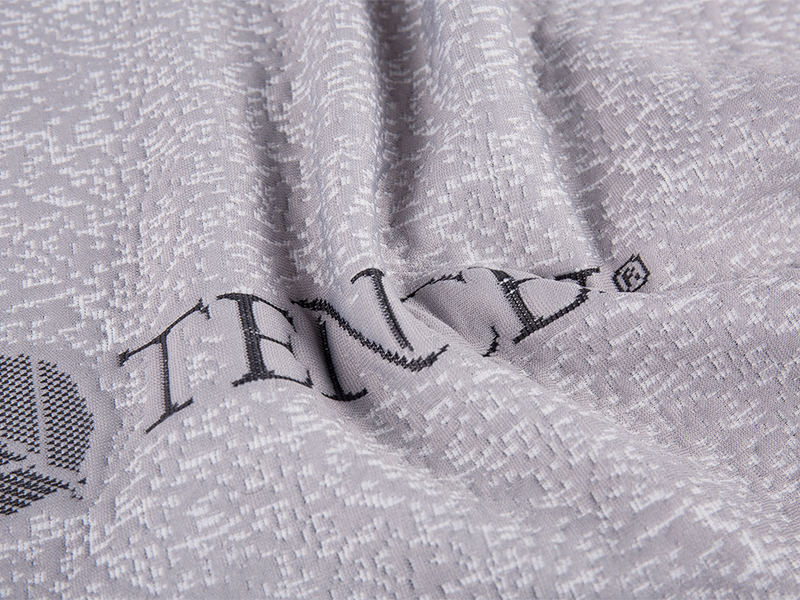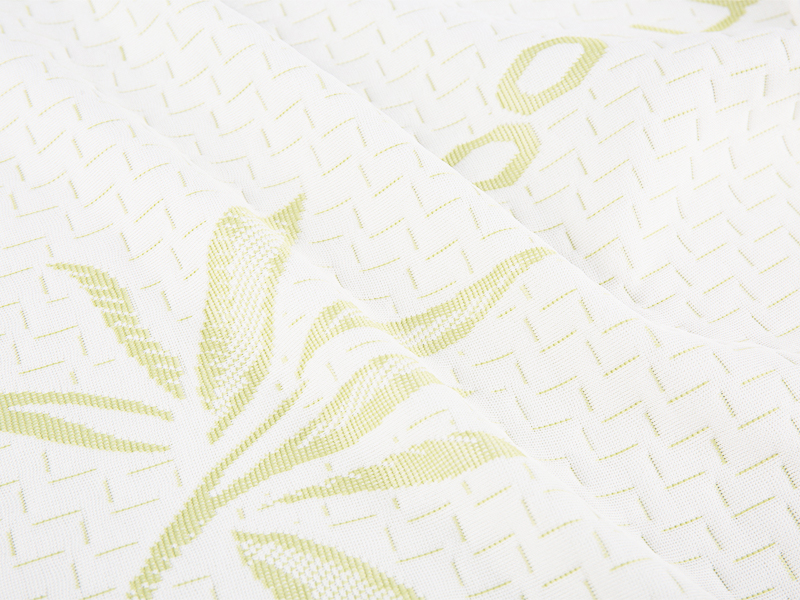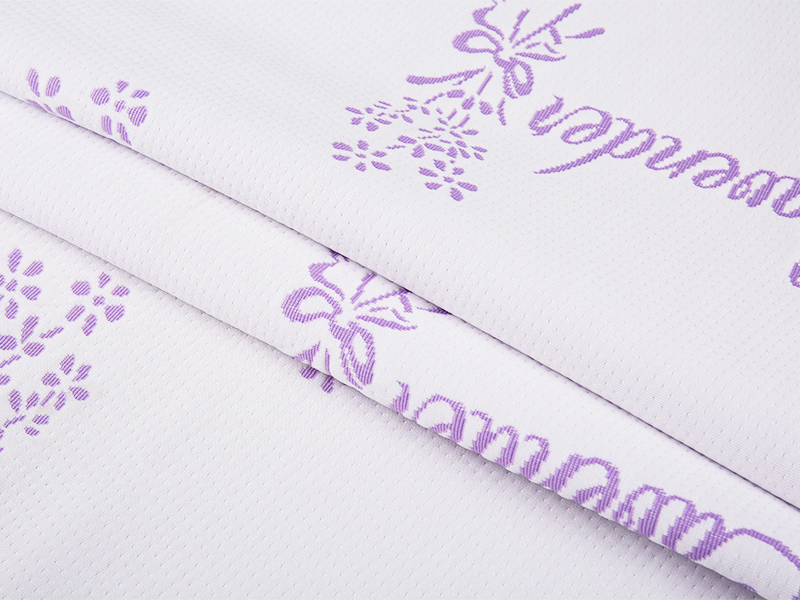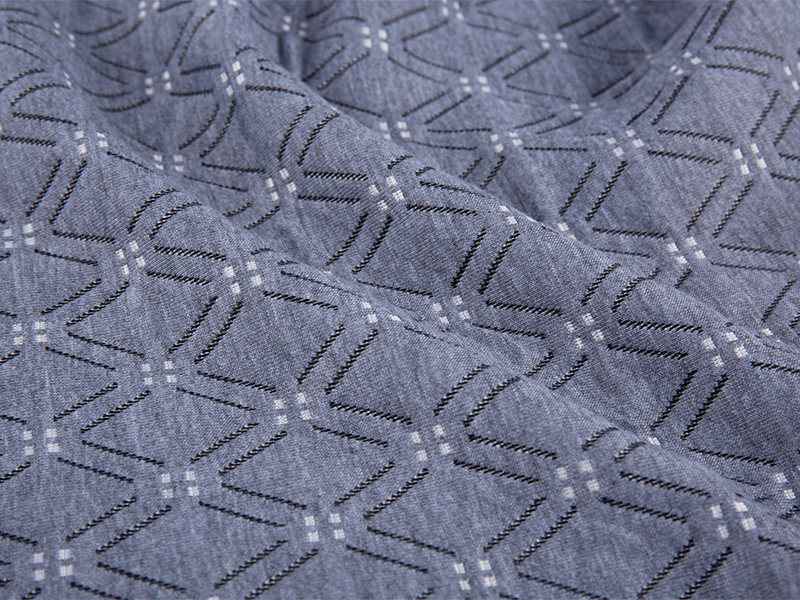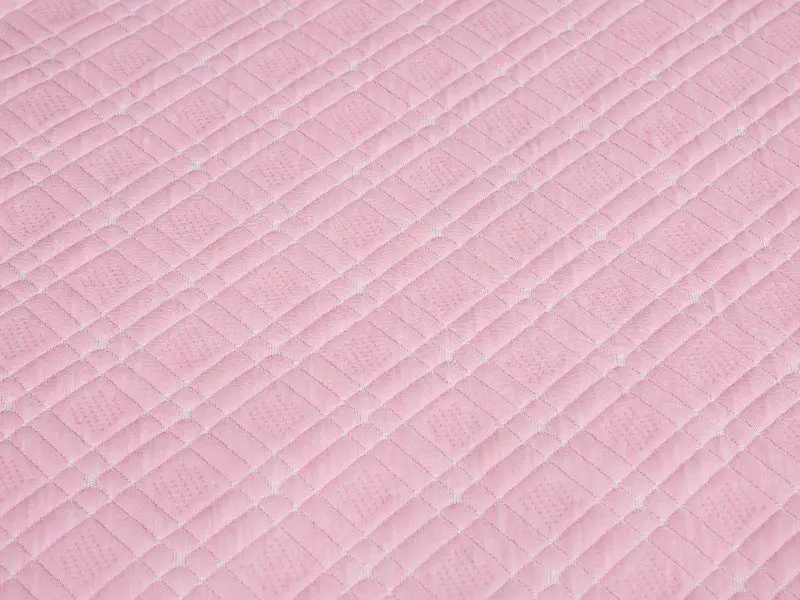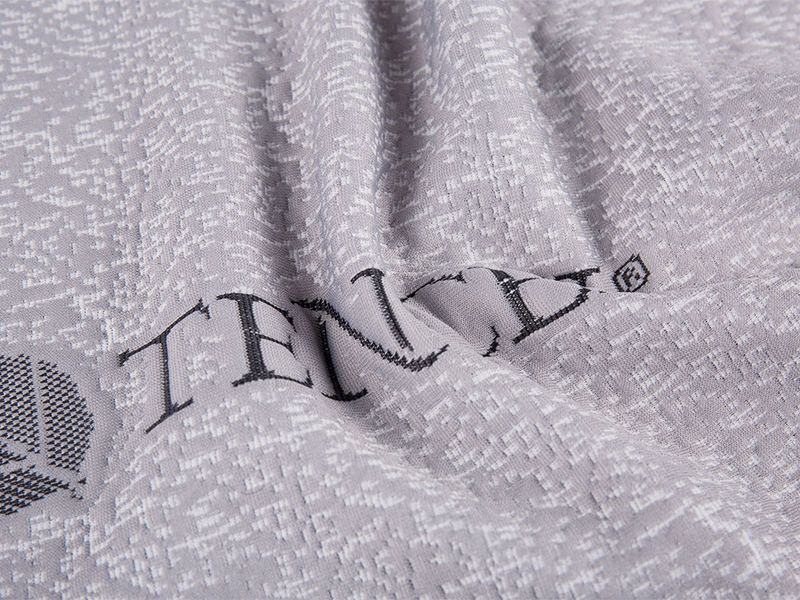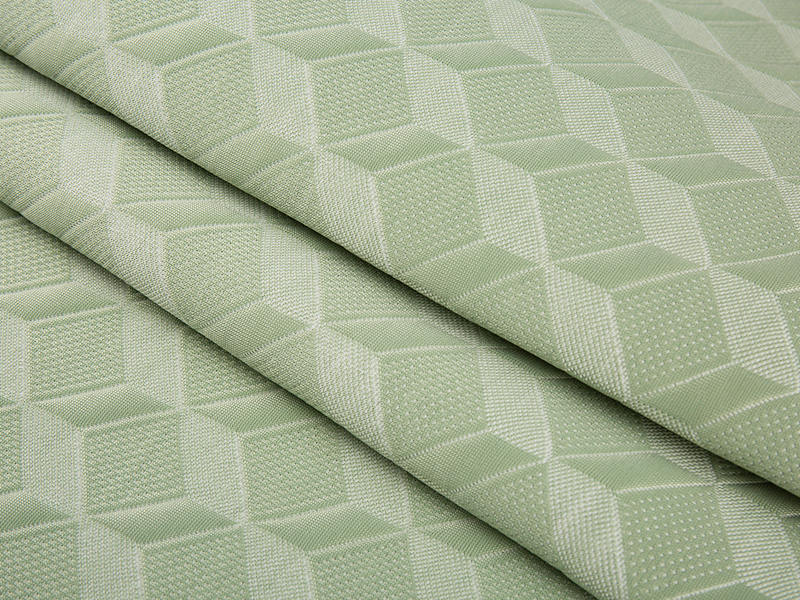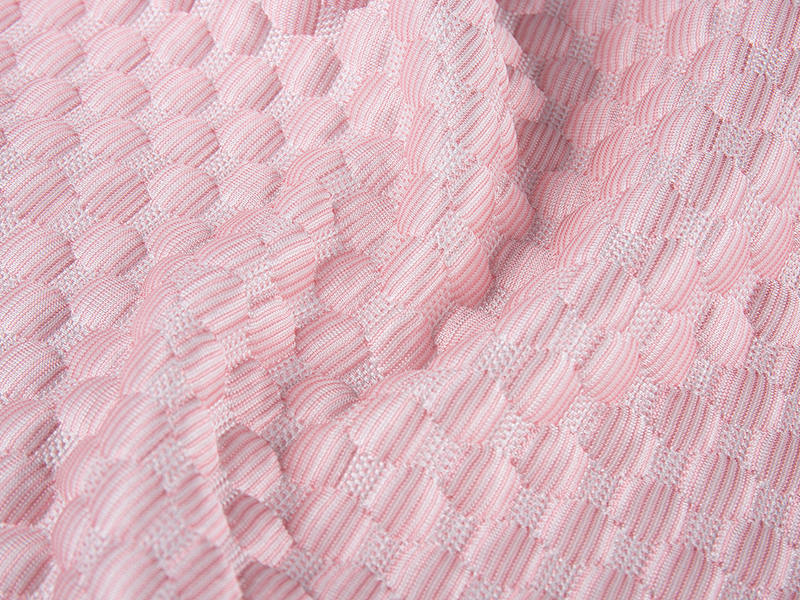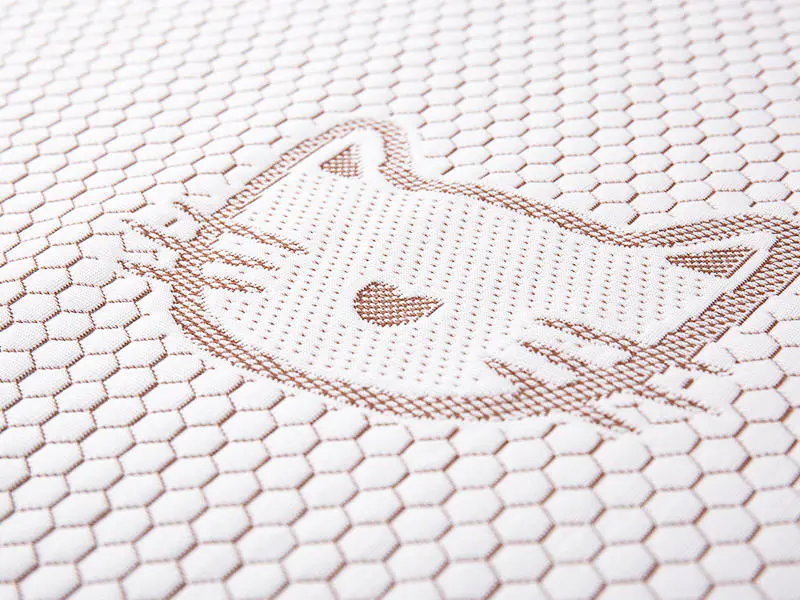Selecting the right mattress fabric is a crucial decision that impacts not only the comfort and aesthetics of your bedroom but also the longevity of your investment. Two of the most popular options on the market are polyester and jacquard fabrics. While both serve the same fundamental purpose, they differ significantly in construction, feel, and performance. This comprehensive guide will delve into the specifics of polyester vs jacquard mattress fabric, helping you determine the best mattress fabric for home environment based on your specific needs.
Understanding Polyester Mattress Fabric
Polyester is a synthetic fabric widely used in the bedding industry due to its remarkable durability and cost-effectiveness. It is a man-made polymer known for its strength and resilience, making it a common choice for many types of mattress fabrics. When considering how to choose mattress fabric for a household with children or pets, polyester's practical benefits often come to the forefront.
- Material Composition: Made from petroleum-based polymers, making it inherently strong and resistant to stretching and shrinking.
- Common Uses: Frequently used as a primary ticking fabric or as a blend with other fibers to enhance durability.
- Key Trait: Known for its excellent resistance to wrinkles, abrasion, and fading from sunlight.
- Care and Maintenance: Generally easy to care for and dries quickly, adding to its convenience for home use.
Understanding Jacquard Mattress Fabric
Jacquard is not a specific material but rather a type of weave, characterized by intricate, raised patterns woven directly into the fabric. This sophisticated weaving technique, often executed on advanced looms, produces a textured, luxurious, and highly durable material. For those focused on mattress fabric durability paired with high-end aesthetics, jacquard is a premier choice.
- Weaving Technique: Created on a jacquard loom, which allows for complex and detailed patterns like florals, geometries, and damasks to be woven in, not printed on.
- Material Composition: Can be woven from various fibers, including polyester, cotton, or blends, combining the benefits of the material with the strength of the weave.
- Key Trait: The pattern is integral to the fabric, meaning it won't fade or wear away over time like a printed design might.
- Aesthetic Appeal: Offers a premium, textured look that elevates the bedroom's decor.
Direct Comparison: Key Factors for Home Use
Choosing between polyester and jacquard for your mattress cover involves weighing several practical factors. The right choice depends on what you prioritize: pure functionality and ease of care or a blend of superior durability with elevated design. The following breakdown will help clarify the distinctions.
Durability and Lifespan
When evaluating mattress fabric durability, both options are strong, but for different reasons. Polyester's strength comes from its synthetic fibers, which are highly resistant to everyday stress. Jacquard fabric, due to its complex weave, distributes tension across multiple threads, creating a robust structure that resists pilling and tearing.
- Polyester: Excellent resistance to abrasion and pilling. Its synthetic fibers can withstand frequent friction without showing significant wear.
- Jacquard: The dense, interwoven pattern creates a thicker, more substantial fabric that is inherently resistant to snags and tears. The design itself does not peel or fade.
| Factor | Polyester Fabric | Jacquard Fabric |
| Abrasion Resistance | Very High | High |
| Tear Strength | High | Very High |
| Pilling Resistance | High | Very High |
| Long-Term Pattern Integrity | Moderate (if printed) | Very High (woven-in) |
Comfort and Breathability
The feel of the mattress fabric against your skin is a primary concern for sleep quality. Breathability is also crucial for temperature regulation throughout the night. This is where the inherent properties of the fiber and the weave structure play a significant role.
- Polyester: Can be less breathable than natural fibers, potentially trapping heat. However, modern microfiber polyester variants are engineered to be softer and more breathable.
- Jacquard: Breathability depends on the base fiber used. A jacquard woven from cotton is highly breathable, while one from polyester will share its thermal properties. The textured weave can sometimes create air pockets that enhance airflow.
| Factor | Polyester Fabric | Jacquard Fabric |
| Softness | Varies (Microfiber is very soft) | Often firm with a textured feel |
| Breathability | Low to Moderate | Depends on base material (Cotton=High, Poly=Low) |
| Moisture-Wicking | Low (hydrophobic) | Depends on base material |
| Skin Feel | Smooth, consistent | Textured, patterned |
Care, Maintenance, and Cost
For home mattress fabric, ease of cleaning and overall cost are practical considerations. Your lifestyle and budget will greatly influence which fabric is the more suitable option for your household.
- Polyester: Is typically machine washable, wrinkle-resistant, and dries very quickly, making it a low-maintenance choice. It is also generally the more affordable option.
- Jacquard: Care instructions depend on the base fiber. While durable, some jacquard covers may require more careful cleaning (e.g., spot cleaning) to preserve the intricate weave. It is often positioned as a premium product with a higher price point.
Making the Right Choice for Your Home
Determining the best mattress fabric for home use is not about finding a universal winner, but rather identifying which fabric's profile best aligns with your lifestyle, priorities, and budget. Both have their distinct advantages in different scenarios.
- Choose Polyester If: Your priority is budget-friendliness, maximum ease of care, and high resistance to stains and moisture. It's an excellent choice for children's rooms, guest beds, or for those who prefer a simple, low-maintenance solution.
- Choose Jacquard If: You are looking for a premium aesthetic, superior structural durability, and a textured feel. It is ideal for the master bedroom where design and long-term investment are key considerations, and you are willing to provide potentially more specialized care.
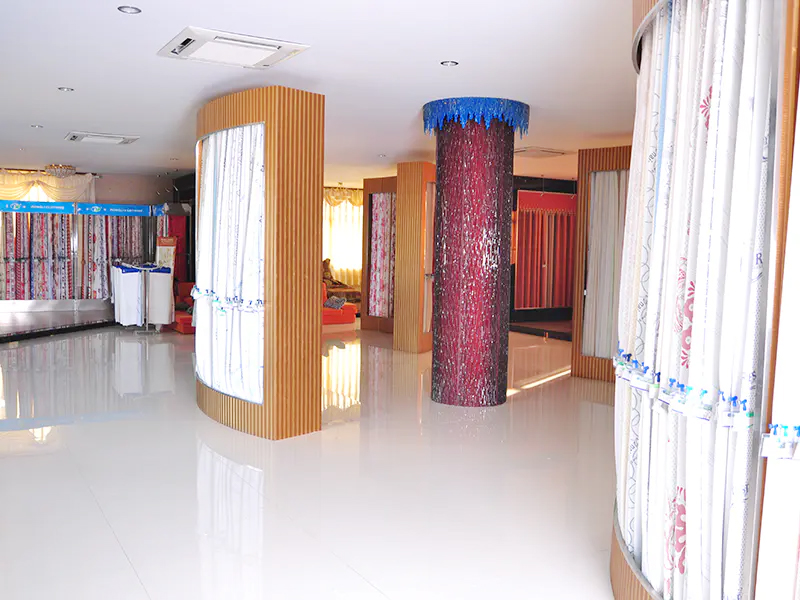
The Importance of Quality Manufacturing
Beyond the type of fabric, the quality of manufacturing is paramount. A well-constructed jacquard or a high-grade polyester from a reputable manufacturer will always outperform a poorly made version. Companies with extensive experience, such as Hangzhou Xiaoshan RongLi Clothing Co., Ltd., leverage advanced weaving machinery and strict quality control systems like ISO9001 to ensure their fabrics, whether jacquard or polyester, meet high standards of performance and safety, as evidenced by Oeko-Tex Standard 100 certification. This ensures that the mattress fabric durability, color fastness, and overall quality are reliable, providing peace of mind for the end consumer.
FAQ
Which is more durable, polyester or jacquard mattress fabric?
Both are highly durable, but in different ways. Polyester excels in resistance to abrasion, pilling, and chemicals due to its synthetic fiber strength. Jacquard offers superior structural durability; its complex woven pattern is incredibly resistant to snags and tears. For sheer fabric integrity, a high-quality jacquard often has a slight edge, but polyester remains a remarkably tough and resilient choice.
Is jacquard fabric good for a mattress?
Yes, jacquard is an excellent choice for a mattress. It is one of the most durable types of mattress fabrics available. The woven-in patterns are long-lasting and won't fade, and the fabric's dense construction provides a sturdy protective layer. It also adds a touch of luxury and texture that plain fabrics cannot match, making it a premium option for any mattress cover.
What are the disadvantages of polyester mattress fabric?
The primary disadvantage of polyester is its lower breathability compared to natural fibers like cotton or wool. As a synthetic, hydrophobic material, it does not absorb moisture well and can trap heat, potentially leading to a warmer sleep experience. While modern microfibers have improved this, it remains a consideration for hot sleepers when evaluating how to choose mattress fabric.
Can jacquard fabric be made from polyester?
Absolutely. Many jacquard fabrics on the market use polyester as the base fiber. This combination leverages the durability and cost-effectiveness of polyester with the aesthetic and structural benefits of the jacquard weave. This creates a mattress fabric that is both highly durable against wear and tear and features a luxurious, permanent pattern.
How do I clean and maintain these different mattress fabrics?
For polyester, check the label, but it is often machine washable in cool water with a mild detergent. Tumble dry on low. Its wrinkle-resistant nature makes it easy to care for. For jacquard, always follow the manufacturer's instructions. While durable, some may recommend spot cleaning to preserve the weave and colors. Vacuuming both regularly is the best practice for maintaining your mattress cover.


